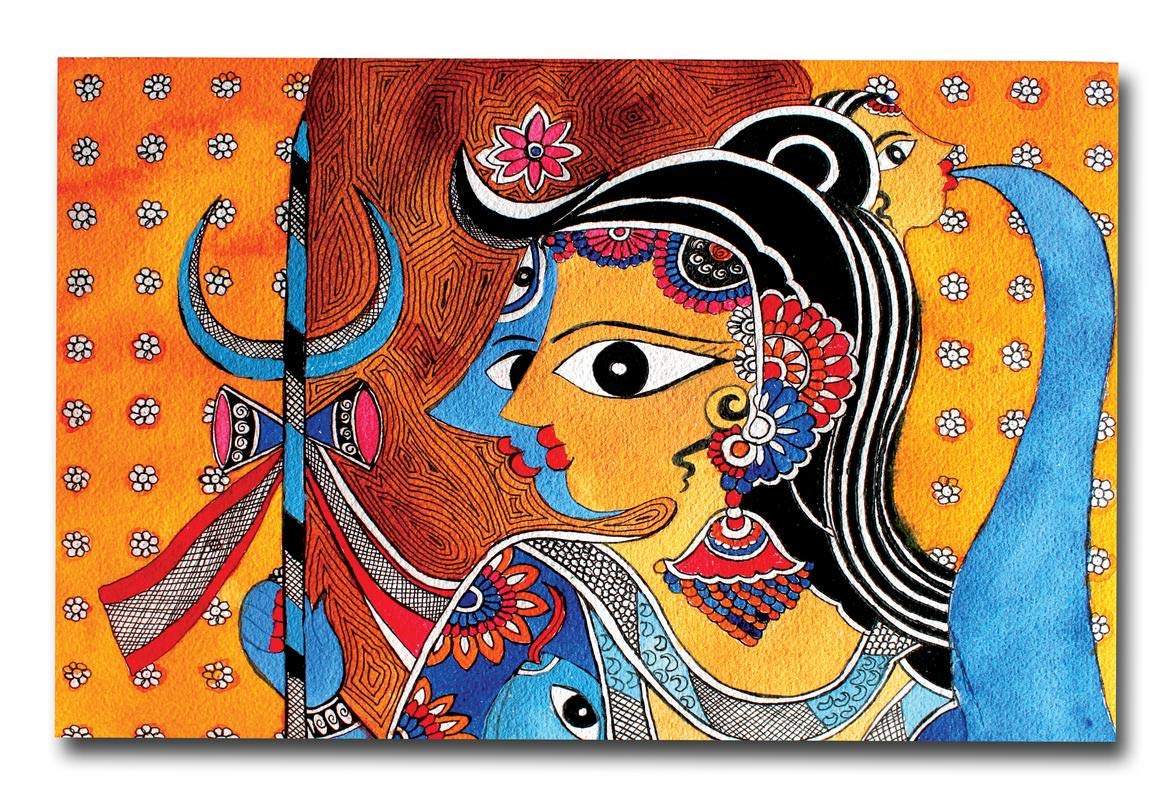Blogs
Art and its symbolism in Human Life
 Art symbolizes expression, emotion, thought, intent, reality, escape, and perception. It
symbolizes the immortality of ideas as it transcends death and decay, to which all earthly
things are subject.
Art symbolizes expression, emotion, thought, intent, reality, escape, and perception. It
symbolizes the immortality of ideas as it transcends death and decay, to which all earthly
things are subject.The first form of art was found in ancient caves, where it was used as a form of human expression. Our ancestors drew their daily lives, helping us understand the ancient life as they knew it. From there, art grew and evolved so that artists not only expressed their immediate surroundings, but used art to deal with innermost feelings that could not be expressed in the form of words. Today, it is also considered a mirror to the socio-political and socio-economic scenario, and social agenda.
Art is used quite complexly; it is not just an expression, it is also an influence on human emotion and thought. In the process of making art, the artist keeps in mind the effect of his colours, forms, and symbols. The Symbolism movement encouraged the use of lines, structure, and objects as a representation of a deeper meaning or larger picture. For instance, a mirror is often used as a symbol of Truth. When symbolism is used in art, the focus is on the artist’s subjective emotion, rather than the literal reality. The purpose of using symbolism is to add nuance to the artist’s ideas in order to enhance the effect of his/her perception. This is quite true for art itself; art is a symbol of our ideas, and adds nuance to our lives.
Art is a universal language understood by people of all nationalities, ages and genders. It is a prominent symbol of human societies, as it promotes the preservation, sharing, and mixing of culture. It is not only used to document human advancement, but is often the cause of it.
Space and creativity
Creativity is multidimensional; it exceeds four walls and is bound only by the extent of our imagination. Needless to say, our creativity is greatly influenced by the space, or environment our mind is in. Our environment impacts our state of mind; it is capable of limiting our thoughts and of generating bizarre ideas. Considering this, it seems fit that an artist might place him/herself under an open sky to allow a free flow of thought. On the same note, artists often feel like their thoughts are constrained inside a closed room. To ensure that the switch for creativity is turned on, artists ensure they’re in a setting that they are comfortable with. This includes lighting, temperature and art material, for it is only if they are physically comfortable that they would be able to fully focus on creating art. However, an uncomfortable space might, at times, act as the trigger for creativity. He/she might want to recreate an uncomfortable experience, and use their memory of this discomfort to create their piece.
The addition of music to one’s creating space is often used to enhance the mood that the artist is in; which might instigate more affluent creativity. For example, when creating a portrait of their significant other, the artist might listen to romantic songs, or if they are using art to vent their frustration, they might listen to loud heavy metal, which resonates with their inner turmoil. In this context, the music is an addition that makes the artist’s environment his/her creative space.
Whether space is an influence on creativity or a cause of it, art it not bound by space due to flexible media that artists have begun to use to display their talent. An artist must create a stimulating space that enriches his/her creativity. Imagination and simplicity in art
As said by Picasso, every child is an artist. Perhaps it is because children are not afraid to imagine the impossible, not obsessed with creating something complex, and are able to do these two things at the same time, without extra effort. For this reason, imagination and simplicity in art are not necessarily contrasting parties. One often influences the other through symbolism and context. An idea can be executed simply, but with a lot of imagination, given that the correct symbols are used and the correct context is created.
For the opening of the imagination and converting feeling or thought into an image, one must use chaotic and tempestuous imagery. Adjacently; viewers perceive the image, and use their imagination to convert their sight into a feeling. Imagination should be seen as a place of ultimate freedom. But often, a question arises; does art come from imagination, or is imagination a portal for expressing your ideas?
To tackle this uncertainty, one must give importance to simplicity. In creating art, one must view their ideas clearly, and elementally, attempting to express purely what they wish to. Pondering too much over what each structure, or colour, or shape signifies, and trying to create something that appeals to the masses, might be the reason many artists overdo their pieces. This in turn hinders the organic effect of art, stripping it of its true purpose: truth.
For this reason, imagination and simplicity would work best as codependent factors. If so, viewers of art would be able to use their imagination to make their own interpretations of the art due to its simplicity, which everyone would be able to understand.
Before it becomes commercial, with children, for instance, art is simply reproducing the images in their head. And maybe, if as adults, we cling onto this purity and innocence in creating art, imagination and simplicity would synchronize to create perfect art pieces.





